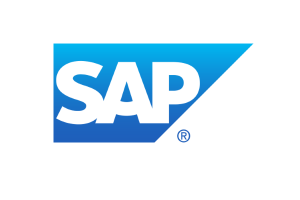Published on the 27/07/2018 | Written by Zag

AT A GLANCE
INDUSTRY
- Forestry
BUSINESS OBJECTIVE
- Optimise applications and reduce the Total Cost of Ownership (TCO) of their IT
- Future BI content to be delivered in a way that encourages business use
- Simplifying the user experience of their various IT systems
- Ensuring staff and contractors are able to complete tasks with ease
SOLUTION
- SAP HANA platform
- Amazon Web Services (AWS) cloud
BUSINESS BENEFITS
- Improved performance
- Less maintenance, freeing up resources
- Processing times have been significantly reduced
- Consistent view of all data to optimise production planning
- Hardware upgrades easier
FOR MORE INFORMATION
Zag
NZ: w// zag.team
E: info@zag.team
AU: w// zag.team
E: info@zag.team
Auckland
T: +64 9 571 7100
Wellington
T: +64 4 472 1897
Sydney
T: +61 2 8520 3797
Improving system performance and production planning in forestry with SAP HANA and Cloud…
This forestry services provider is the third largest forestry company in New Zealand with approximately 130,000 hectares of plantations across the country. The organisation takes pride in their knowledge of the land and sustainable timber management practices. Through ongoing commitment, it is helping to grow and support the local industry and the communities in which they work.
Soltius has been working with this client for over 10 years, providing support and consultancy services across their SAP landscape. In 2015, Soltius embarked on a digital road mapping exercise to assist in aligning their strategic plan with their IT environment. This exercise revealed a need for development in the following areas:
Simplification in the System Landscape – A key long-term focus is to optimise applications and reduce the Total Cost of Ownership (TCO) of their IT. This implies the use of standard functionality wherever possible, reducing the footprint of custom applications and the costs associated with supporting these.
Business Intelligence – Ensuring its BI architecture will allow future BI content to be delivered in a way that encourages business use, whilst ensuring Production Planning and Analytics is supported.
User Experience and Mobility – Simplifying the user experience of their various IT systems and ensuring staff and contractors are able to complete tasks with ease.
Initial problem
Some constraints to growth were noted in the road-mapping discussions. These included the weakening trade prices for timber and associated products, as well as the fact that the client’s in-house servers would reach end-of-life in 2017. The organisation sought to set up a future-proofed foundation for growth and an IT ecosystem that would enable them to effectively ‘do more with less’. In addition, the ongoing maintenance of their existing data warehouse meant resources were being poured into keeping the system running, at the expense of additional insight and value-adding activities.
“Scenario modelling allows ‘what-if’ planning and more time to optimise processes and achieve the best outcome.”
Traditionally, the lack of a ‘lead’ analytics system had meant the client struggled to get a clear picture of ‘the truth’ due to contradictory analysis. Disparate data sources available to production managers led to slower and less consistent decision making. These same managers also did not have rapid visibility for each sale and could not easily conduct scenario analysis. They therefore saw the need to consolidate disparate information into a single system, enabling better insights and reporting from the data they regularly capture in the field.
To get the kinds of insights they wanted, it soon became clear that production planning processes needed to be systemised and their data processed at a finer level of detail. Hardware and traditional databases were holding the company back as the client realised these would struggle with the level of detail required to make production-planning optimisation workable.
Solution proposed
Together, the client and Soltius decided that the best initial step would be to migrate the organisation’s existing SAP Business Warehouse (BW), SAP Business Planning & Consolidation (BPC) and SAP BusinessObjects applications on to the SAP HANA platform.
SAP’s ground breaking in-memory database and platform – HANA – stood out as the solid foundation they were looking for. By migrating SAP BW to the HANA platform, the organisation was able to leverage a number of benefits straight away including:
Greater Simplicity – Fewer layers and lower total cost.
In-Memory planning – In-Memory planning engine enables faster planning cycles.
Better Analysis – Ability to unlock new insights with predictive and complex analysis.
SAP HANA provides the ability to simplify SAP Business Warehouse, stripping layers of complexity from the system and providing a clearer, easier-to-maintain system. It also provides a solid platform to expand the Business Warehouse into other subject areas at a level of detail never before possible.
In addition, the SAP HANA platform multiplies the benefits of SAP BPC, allowing customers to conduct more detailed calculations of larger data sets. BPC on HANA is useful for much more than just the traditional financial planning processes – now, driver models that include large data sets and complicated allocation calculations can feed into your traditional Profit and Loss budgets and forecasts. With SAP HANA, scenario modelling is also possible on these large, driver-based models as the system is able to rapidly copy and re-calculated data based on different driver inputs. This allows ‘what-if’ scenario planning and gives users more time to optimise processes and achieve the best outcome.
At the same time, with their on-premise servers reaching end of life, the client made the decision to migrate all of this onto the Amazon Web Services (AWS) cloud. Having weighed up on-premise deployment with the cloud, and then having looked at a number of cloud options, they felt AWS was the logical decision. Hosting their SAP solutions in the cloud offered them the option of a minimal initial cost outlay, and the ability to ‘get-going’ without the delay of provisioning and setting up on-premise hardware.
The high level of availability of HANA servers, coupled with the ability to start ‘consuming as they go’, made AWS the smart choice. In addition, the maturity of the certified SAP HANA offering on AWS was a major factor leading to their decision. The migration to the AWS cloud was done using standard SAP migration techniques and proved a straightforward process. The entire migration was achieved during a standard migration weekend.
The high level of availability of HANA servers, coupled with the ability to start ‘consuming as they go’, made AWS the smart choice.
Key outcomes
As a result of moving to the SAP HANA platform on AWS, the client is now seeing improved performance and are ideally positioned to take advantage of future SAP enhancements. Its Business Warehouse now requires less maintenance, freeing up resources which are now being used to develop new functionality. As an added bonus, processing times have been significantly reduced for both the Business Warehouse and BPC on SAP HANA.
The SAP HANA platform is being leveraged in the BPC environment to systemise production-planning processes. The newly developed system now provides a consistent view of all the data production managers need to optimise production planning, which will lead to better decisions, reduced log inventories at ports and more rapid responses to changing markets. The organisation has forecasted $1.6 million in annual savings as a result of improved production planning using BPC on SAP HANA.
Since deciding to host these systems on the AWS cloud, this forestry services provider haven’t looked back. Not only did this move allow them to get up and running faster, it has also led to significant TCO reductions and the end of concerns surrounding the maintenance and upgrading of hardware.
Future roadmap
The experience to date has been so positive that, with Soltius’ help, work has begun towards moving all workloads onto AWS. Having now seen the benefits of SAP on AWS first-hand, the organisation feels comfortable that the time is right to start planning migration of their SAP ERP system and the remainder of their IT services, to the AWS cloud.
This move to the cloud has been much more than a simple lift and shift operation. Business leaders have used the project as an opportunity to learn, and now see that it has provided the catalyst they needed to ‘transform’ their IT department. They have seized the opportunity to redefine their IT department internally and position it to deliver greater value to the business. The next step is to look at their IT strategy and review the tools they are using to manage their environment – do they still fit within this new cloud-first mindset?
The client will continue leveraging Soltius’ extensive knowledge of SAP and AWS, having already conducted a series of workshops where planning is underway for future migration and cloud transformation activities.
FURTHER READING
About This Vendor
More Case Studies

DOC’s business value with Partner Managed Cloud
Cutting a new track to increased agility and cloud success…

Ministry of Justice ups compliance with SAP
Verdict: Full compliance, smoother pay runs and reduced admin…

Hydro Tasmania converts to the power of S/4HANA
Remote project delivery mid-pandemic proves a success…

Chorus transforms billing engine
Partnership with Zag delivers a fit-for-purpose billing system, independent from Spark…

Hydro Tasmania’s ‘DIY’ rollout of new mobile asset-inspection software
Australia’s largest water manager liberated by intuitive asset-management app empowering technicians and planners…




























